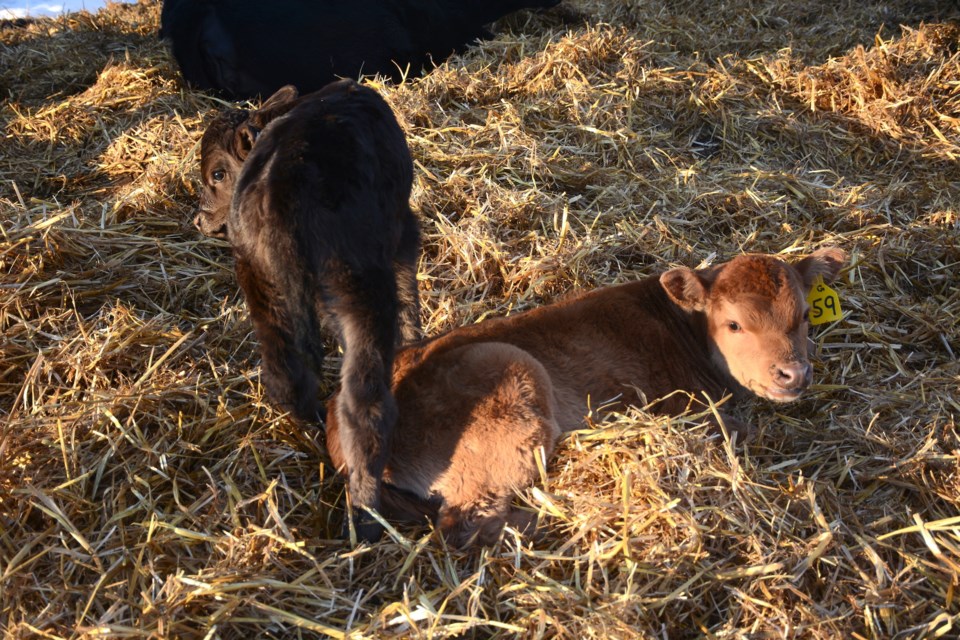By Roy Lewis DVM
This past year a totally oral supplement for newborn ruminants (calves, lambs and goat kids) was launched.
Apart from selenium and the fat-soluble vitamins which are normally injected at birth requiring two separate needles, it contains one other mineral and one other vitamin. The product is formulated to have very similar amounts to the injectable products but also contains a measured amount of iron and the water-soluble vitamin B12. We all know that suckling calves on mothers’ milk can run into deficiencies which is why producers in western Canada generally supplement with these vitamins and minerals. I prefer and I am sure many producers do as well with newborn calves at the time of tagging to substitute a couple needles for an oral product is welcome. We always talk about pain and stress and an oral product is far less innocuous than a couple needles.
The pharmacy company that developed this product also did some looking into iron levels and found that calves are born lower in iron as well. I don’t ever recall talking about iron in calves in veterinary medicine but for as long as I can remember piglets are given a source of iron either orally or as an injection so it makes sense-supplementing calves with iron could have a big benefit. This is especially true as growth and with more blood production iron is required.
The good news about iron is once one gets it into the calves very little is ever excreted. The only real iron loss would be with blood loss. There were multiple B vitamin products that also contained iron and copper elements in them to treat things like blood loss or chronic infections that gradually deplete these minerals. Extra iron then is a relatively cheap form to supplement and, in the product, Vitaferst the form of iron that is most readily absorbed is used. That is the same with Vitamin B 12 which has some appetite stimulating qualities and are needed for things like cell growth and maturity. Calves get a lot of their B12 in the colostrum but milk is low in things like B12 and selenium, which is why with rapid growth especially in these modern times deficiencies can result.
Nutritionists to me can really help to look after our cattle herds by balancing rations and ensuring the mothers and hence fetus’s nutrition is looked after. A critical time is after birth with milk being the sole source of nutrition for the first four to six weeks of life anyway supplementing might get us by those gaps. We also know that most of the cattle producing areas of western Canada are selenium deficient
The product comes with a syringe to pull off the product (dosage is 1cc/5kg in cattle and 3cc/5 kg lamb). With a 100 lb (45kg) calf receiving 9cc those administering it tell me the calves take it very well. What I like from a practical standpoint it comes with a fridge magnet dosage chart and a 250cc bottle so can do 30 or so calves. Since it is not a prescription product it will be available at the regular channels like veterinary clinics, feed stores, feed mills, places like UFAs in Alberta or perhaps Cowtowns in Saskatchewan. It can be kept at room temp and with most products we deal with don’t freeze it. The consistency of it makes it quite easy to administer.
But as with all things, ask the professionals you trust such as your veterinarian, nutritionist, feed mill, or breed organization about their thoughts on this product.
Editor’s Note: Roy Lewis was a practicing vet in Westlock for 30 years, has worked at Farmfair International and does consulting work in the cattle industry via his company Roy Lewis Veterinary Services.



